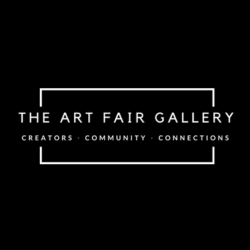Business Goals
We all know January is all about setting and breaking new year’s resolutions. (According to US News and World Report, 80% of people have stopped working on their resolutions by mid-February.) This article isn’t about resolutions; this is about setting and working on the goals you have for your business.
You do have goals, don’t you?
If not, let’s start with looking back at last year. Do you know what your gross revenue was? This would be your gross sales from last year. If not, look at your bank account and see what your deposits are from your business. You did separate your business account from your personal bank account, didn’t you? If so, good for you. If not, do that right now. Really, stop reading and go online today or head to your local bank and set up another account for your business. You need to know how much your business brings in.
Ok. We now have our gross revenue amount from last year. Are you happy with it? It doesn’t matter if you made an additional $1,000 from your first show or are earning $100,000 annually. If you are satisfied with it, let’s figure out how to do this again. And if you aren’t happy, what can you do to increase it, so you are more satisfied with your revenue.
First, do you have the time and energy to do more shows?
If yes, which fairs fit with what you sell and your price point? Ensure the cost of traveling to the new shows makes sense with your goal of earning more money. If you spend more than you make going to an event, will it pay off in the future if you continue to go? Or will you make repeat customers from another location? Are there other great shows in your local area you can do? Maybe you only did one show during the summer, is there one during the holidays you could do?
Second, do you have an online presence?
If not, do you have the time and energy to deal with selling online? The order processing and monitoring of sales? If you can do so, decide where you want to sell. Do you want to set up an Etsy shop, apply to Amazon Handmade, set up your online store?
There are advantages and disadvantages to all. Kiff at The Artist’s JD wrote up some of the differences in your rights between having an Etsy Store and an Amazon Handmade Store. It’s worth a read to find out some of the differences.
Third if you do not have the time and energy to do more shows or create more inventory to sell, the next option for increasing revenue is to increase the price point of what you sell.
But before you do this, you need to do some research to see if this will lose your existing customers. If you sell on Etsy, how price sensitive are the shoppers? Will they buy from another vendor if you increase your price a $1 and item? If you are selling at an art fair, will it price you out of the market if you increase your sales price by $10 per item?
It is a bit of a tricky situation when pricing your products, which I am sure you went through when you initially priced them. But look at your costs and what you want to earn and make a decision if it would be in your interest to increase your price.
Or, conversely, is your price point too high to create sales? Do you need to decrease it to increase your sales? Would reducing the per-item cost of your home-made lotions by $.50 increase your overall sales and make you more net income?
Do not change your price without doing some research and look at your bottom line. Is it worth creating more sales if you are already stressed to make the inventory and fill the orders?
We go back to time and energy.
You are your business. You decided to create your own business for your reasons. To make additional side-income, to be your own boss, to spend your time creating.
You may have also started your business to be able to have time with your family. Make sure your business goals still work with your personal goals. Make sure you didn’t create a business you no longer love doing. Of course, there will always be parts of a business you don’t love, but you should, overall, love what you are creating!
So, it is time to sit down with pen and paper, or hands-on a keyboard and write out your business goals. They need to be SMART goals, meaning they are specific, measurable, actionable, realistic, and time-bound. Here are some you may want to look at:
-
- The number of shows this year.
- Amount of items I want to create and the inventory of each.
- What am I making this year (new products)?
- How much do I want to earn?
- Do I want an online presence?
- If I have an online presence, do I need to revamp how it looks?
- How much time do I want to spend on my business?
Once you have the answers to these questions, it is time to sit down with your calendar and schedule your year.
When are the shows you want to do? When do you need to apply to them? Include all of this in your calendar. Once accepted to an event, work backward to figure out when you will need to create the inventory you want to sell. How much time does each item take to make, how much time do you have each week to complete the show’s inventory?
Looking at earnings, how much do you need to sell at each show to meet your goals? Or, if you sell online, how much do you need to sell each day to meet your revenue goals? How many sales will you need to make to reach that amount? How much of your time will you need to invest for each sale?
As you work through fitting your tasks into your calendar, you will start to see if your goals are realistic.
Can you realistically create the inventory you need for a show a month from now? Will you have the time to keep up with your online store if you attend another craft fair? Will you still love your business and have time for your life with the goals you want to achieve?
If not, reassess your goals to make them fit in with your overall life.
There is no reason to kill yourself, making the inventory, and creating additional revenue if you will not have time to enjoy your life. Because although you are your business, your business is not all there is to you.
If you would like additional resources on goal setting, you can take a ton of classes. Amazon also has a ton of books on goal setting. I am currently reading James Clear’s Atomic Habits; I recommend it, but find one which speaks to what you are looking to learn.
Wishing you all the best as you create your goals for this year.











